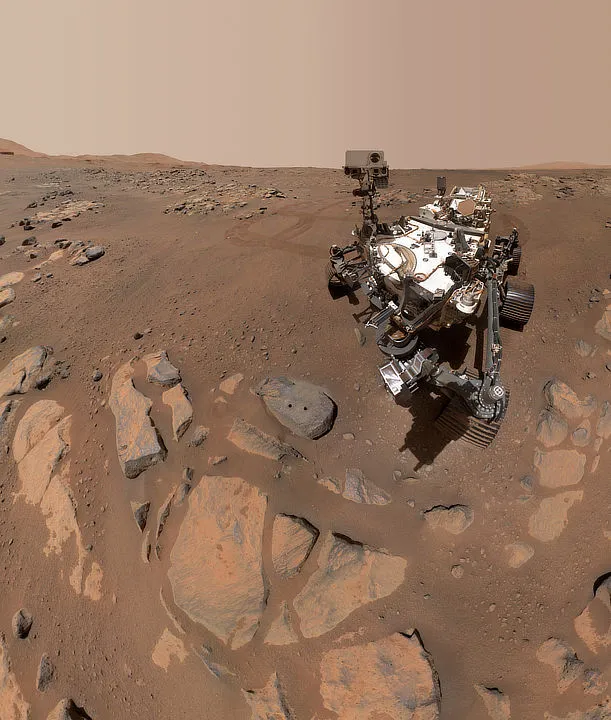How will future astronauts breathe on Mars?
Among the requirement for food, fuel and protection from harsh radiation, the necessity for fresh, pure oxygen will probably be future Mars settlers' biggest demand.
A device called MOXIE (Mars Oxygen In-Situ Resource Utilization Experiment) could be the answer.
MOXIE, which is about the size of a small microwave oven, is aboard the Mars Perseverance rover, which landed on Mars in 2021.
For more on Mars settlement, read our articles How will humans survive the journey to Mars? How astronauts can hide from radiation on Mars, Could we really live on Mars?, How long is a day on Mars?

NASA has announced that MOXIE has generated oxygen for the 16th and final time aboard the rover.
Since landing on Mars, it has generated 122g of oxygen, equivalent to what a small dog breathes in 10 hours.
At its peak, MOXIE was producing 12g of oxygen per hour at 98% purity or better.
This, says NASA, is twice as much as was originally expected for the instrument.

Could this be the answer to how astronauts will breathe on Mars?
MOXIE's creators at the Massachusetts Institute of Technology say it has proved more successful than they could have imagined.
This, says NASA, bodes well for the future production of oxygen on Mars, and could mean a source of breathable air for astronauts and rocket propellant.
In the latter case, the ability to produce rocket propellant in-situ could be key to getting Martian astronauts back to Earth.

How to produce breathable air on Mars
How will astronauts breathe on Mars if there isn't any oxygen to begin with?
The MOXIE device on Perseverance Rover produces molecular oxygen through an electrochemical process.
It is able to separate 1 oxygen atom from each molecule of carbon dioxide, which it gathers from Mars's atmosphere.
It can even analyse and check the purity of the oxygen it produces.
A device like MOXIE could remove the need for future missions to Mars to bring large quantities of oxygen along for the ride.
Perhaps, in a way similar to the famed film The Martian, based on the book by Andy Weir, human settlers on Mars would be able to 'live off the land', producing their own resources.
This field of research is known as 'in-situ resource utilization' or ISRU.
What next for MOXIE?
According to NASA, the next stage in the process for producing breathable air for astronauts on Mars would be to create a full-scale system.
This would include a MOXIE-style oxygen generator and a means to liquefy and store oxygen.
Key takeways
“MOXIE’s impressive performance shows that it is feasible to extract oxygen from Mars’ atmosphere – oxygen that could help supply breathable air or rocket propellant to future astronauts,” says NASA Deputy Administrator Pam Melroy.
“Developing technologies that let us use resources on the Moon and Mars is critical to build a long-term lunar presence, create a robust lunar economy, and allow us to support an initial human exploration campaign to Mars.”
